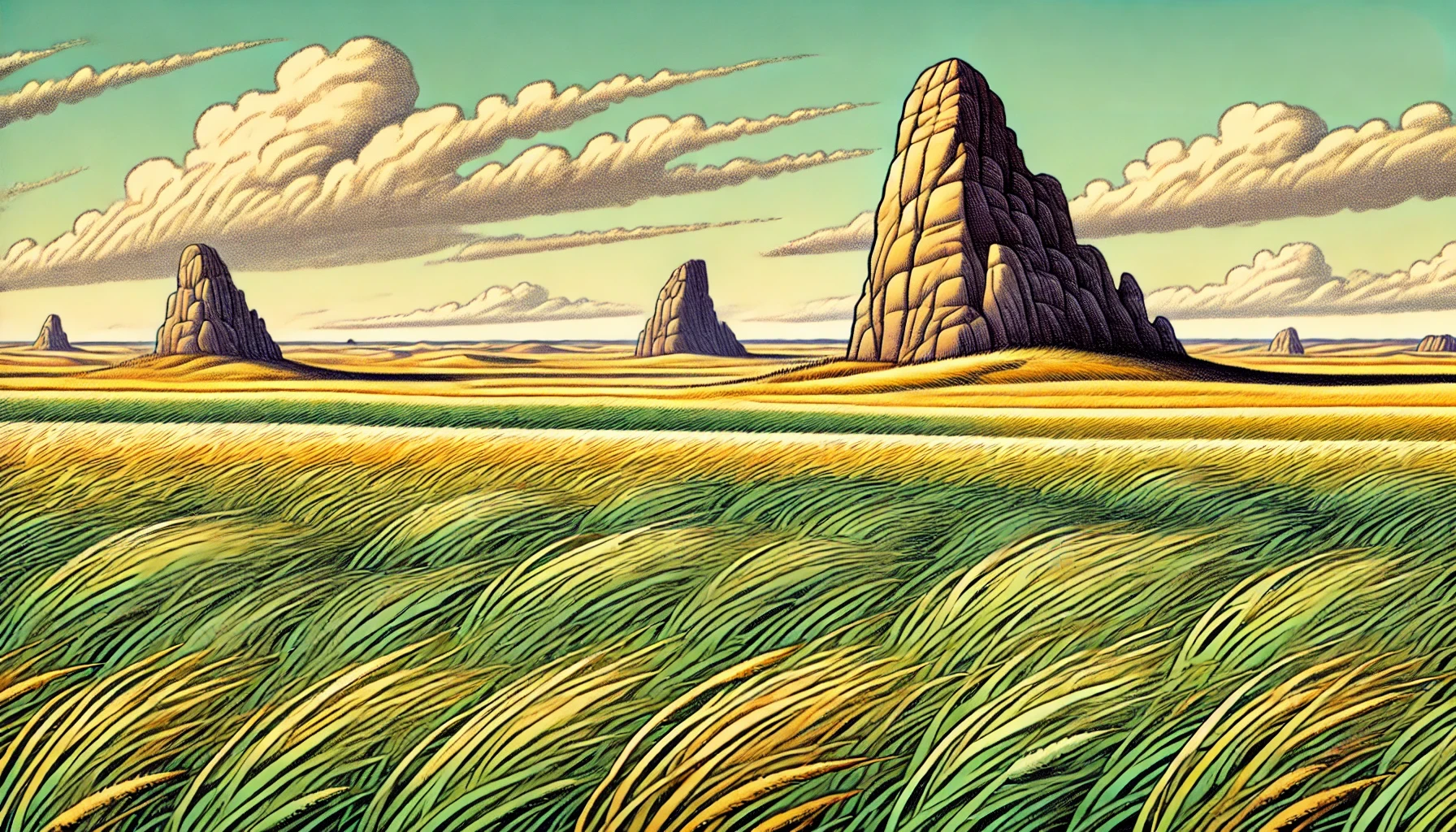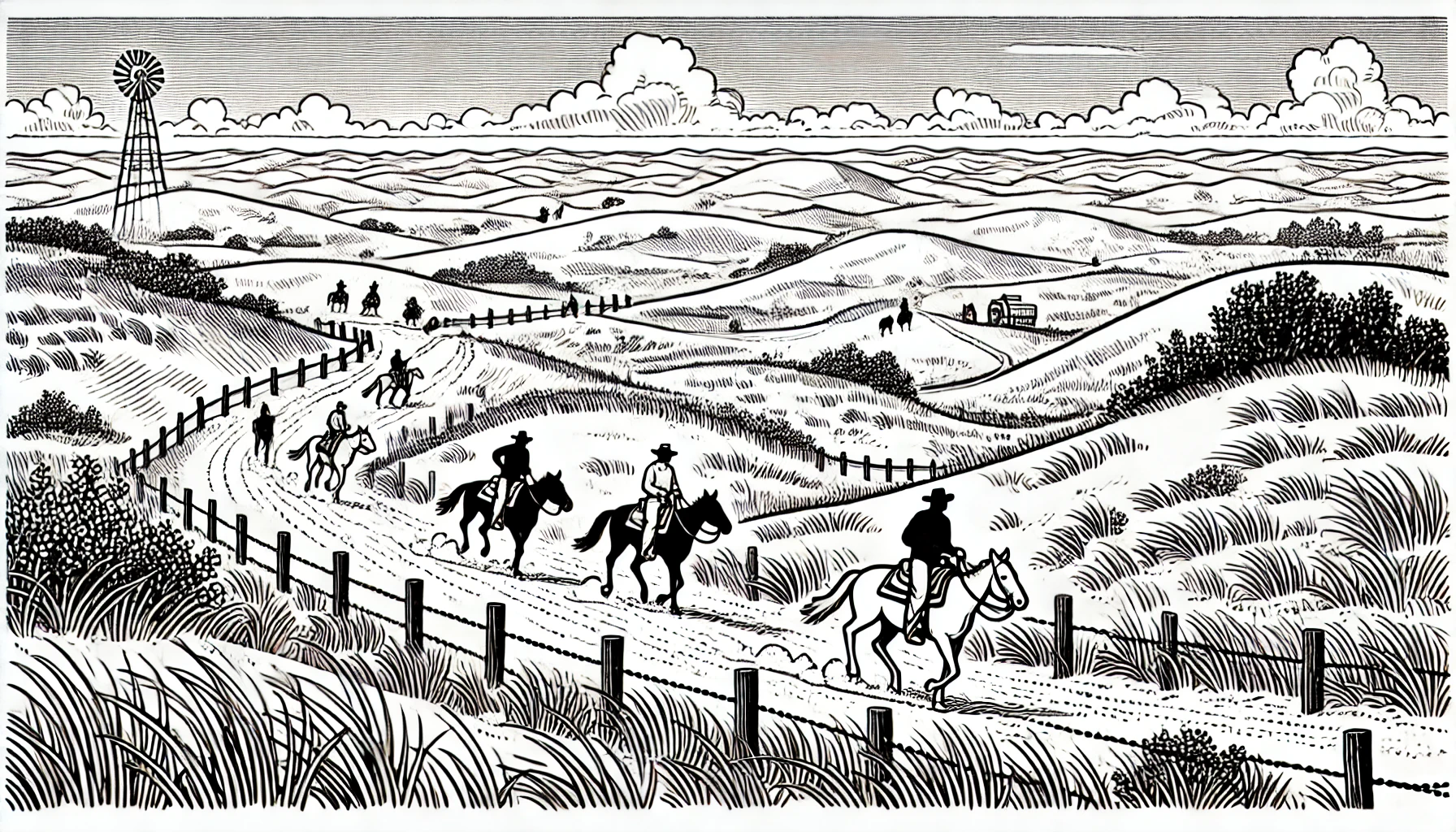Rainwater Basin Wetland Complex

Located in south-central Nebraska, approximately 90 miles southwest of Lincoln and 120 miles west of Omaha, the Rainwater Basin Wetland Complex is a prominent stopover point for migratory waterfowl along the Central Flyway. This unique ecosystem is characterized by shallow, temporary wetlands that are fed by rainwater runoff, presenting a challenging environment for plants and animals to survive.
The Rainwater Basin Wetland Complex consists of about 90 distinct wetlands, including Marsh Creek, Funk Waterfowl Production Area, and Massie Wetland, among others. These wetlands were formed through a combination of geological processes, including the movement of glaciers during the Pleistocene era and more recent river flooding. The diverse plant species present in this ecosystem have adapted to varying levels of salinity and water level fluctuations, resulting in diverse aquatic and terrestrial communities. For example, salt-tolerant plants like saltwort and pickleweed are well-suited to the high salt levels present in some of these wetlands.
A prominent feature of the Rainwater Basin Wetland Complex is the occurrence of playa lakes, which are shallow depressions that temporarily hold rainwater. Many of these playa lakes feature characteristic ring-shaped vegetation patterns, often dominated by tall grasses like switchgrass and big bluestem. These unique patterns result from differential rates of sedimentation, nutrient supply, and water level fluctuations. The presence of diverse wildlife habitats, including emergent plants, open water, and shoreline areas, supports a rich assemblage of bird species, including mallard ducks, American golden-plovers, and Wilson's snipes.
The distinctiveness of this ecosystem also poses environmental management challenges, particularly in addressing habitat degradation and agricultural runoff. Conservation efforts have resulted in programs such as the Rainwater Basin Joint Venture, a collaboration among government agencies, non-profit organizations, and landowners to conserve habitat and improve water quality. By improving wetland natural processes and establishing buffers to filter runoff from surrounding agricultural lands, the ecological integrity of this fragile system can be protected.
One notable example of conservation efforts in the Rainwater Basin Wetland Complex is the Funk Waterfowl Production Area, approximately 15 miles north of the town of Funk in Phelps County. Established in 1956, the Funk Waterfowl Production Area serves as a migratory waterfowl refuge and features restored wetland habitats that provide shelter and breeding grounds for various waterfowl species. Conservation of this wetland complex relies on strategic collaborations among local stakeholders and increased awareness of ecological importance.
Conservation efforts and scientific research of the Rainwater Basin Wetland Complex also engage regional colleges and universities. The University of Nebraska at Kearney has established a regional research center to examine conservation strategies for this ecosystem, working closely with local farmers to test farm management practices that can balance agricultural production and habitat conservation.
Understanding the intricate ecological processes of this unique environment requires long-term observation and fieldwork. Scientists at the Rainwater Basin Wetland Complex continue to gather insights on ecosystem characteristics and relationships between runoff, sedimentation, and nutrient supply. Monitoring of wetland changes through ongoing research collaborations ensures a strong relationship with environmental managers, allowing for adaptation of conservation strategies to these dynamic ecosystems.
Overall, the Rainwater Basin Wetland Complex provides an essential understanding of Nebraska's natural history and the state's unique environment of Nebraskan waterfowl migration. A fundamental contribution of its ecosystems to biodiversity is that regional institutions like state parks, regional universities and partners from universities from other states do offer research to improve public policies related with Nebraskan wildlife ecology.
The Rainwater Basin Wetland Complex consists of about 90 distinct wetlands, including Marsh Creek, Funk Waterfowl Production Area, and Massie Wetland, among others. These wetlands were formed through a combination of geological processes, including the movement of glaciers during the Pleistocene era and more recent river flooding. The diverse plant species present in this ecosystem have adapted to varying levels of salinity and water level fluctuations, resulting in diverse aquatic and terrestrial communities. For example, salt-tolerant plants like saltwort and pickleweed are well-suited to the high salt levels present in some of these wetlands.
A prominent feature of the Rainwater Basin Wetland Complex is the occurrence of playa lakes, which are shallow depressions that temporarily hold rainwater. Many of these playa lakes feature characteristic ring-shaped vegetation patterns, often dominated by tall grasses like switchgrass and big bluestem. These unique patterns result from differential rates of sedimentation, nutrient supply, and water level fluctuations. The presence of diverse wildlife habitats, including emergent plants, open water, and shoreline areas, supports a rich assemblage of bird species, including mallard ducks, American golden-plovers, and Wilson's snipes.
The distinctiveness of this ecosystem also poses environmental management challenges, particularly in addressing habitat degradation and agricultural runoff. Conservation efforts have resulted in programs such as the Rainwater Basin Joint Venture, a collaboration among government agencies, non-profit organizations, and landowners to conserve habitat and improve water quality. By improving wetland natural processes and establishing buffers to filter runoff from surrounding agricultural lands, the ecological integrity of this fragile system can be protected.
One notable example of conservation efforts in the Rainwater Basin Wetland Complex is the Funk Waterfowl Production Area, approximately 15 miles north of the town of Funk in Phelps County. Established in 1956, the Funk Waterfowl Production Area serves as a migratory waterfowl refuge and features restored wetland habitats that provide shelter and breeding grounds for various waterfowl species. Conservation of this wetland complex relies on strategic collaborations among local stakeholders and increased awareness of ecological importance.
Conservation efforts and scientific research of the Rainwater Basin Wetland Complex also engage regional colleges and universities. The University of Nebraska at Kearney has established a regional research center to examine conservation strategies for this ecosystem, working closely with local farmers to test farm management practices that can balance agricultural production and habitat conservation.
Understanding the intricate ecological processes of this unique environment requires long-term observation and fieldwork. Scientists at the Rainwater Basin Wetland Complex continue to gather insights on ecosystem characteristics and relationships between runoff, sedimentation, and nutrient supply. Monitoring of wetland changes through ongoing research collaborations ensures a strong relationship with environmental managers, allowing for adaptation of conservation strategies to these dynamic ecosystems.
Overall, the Rainwater Basin Wetland Complex provides an essential understanding of Nebraska's natural history and the state's unique environment of Nebraskan waterfowl migration. A fundamental contribution of its ecosystems to biodiversity is that regional institutions like state parks, regional universities and partners from universities from other states do offer research to improve public policies related with Nebraskan wildlife ecology.
